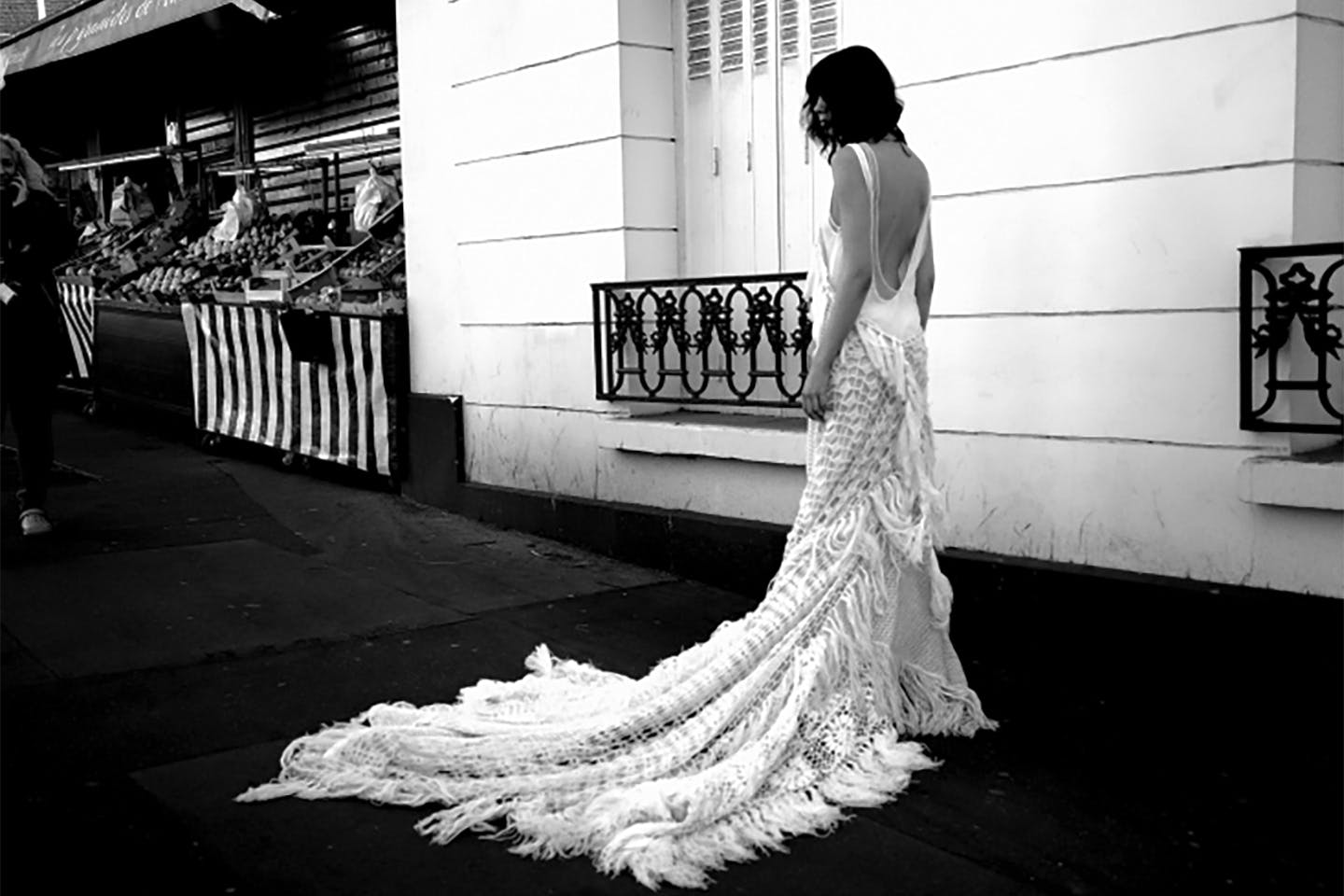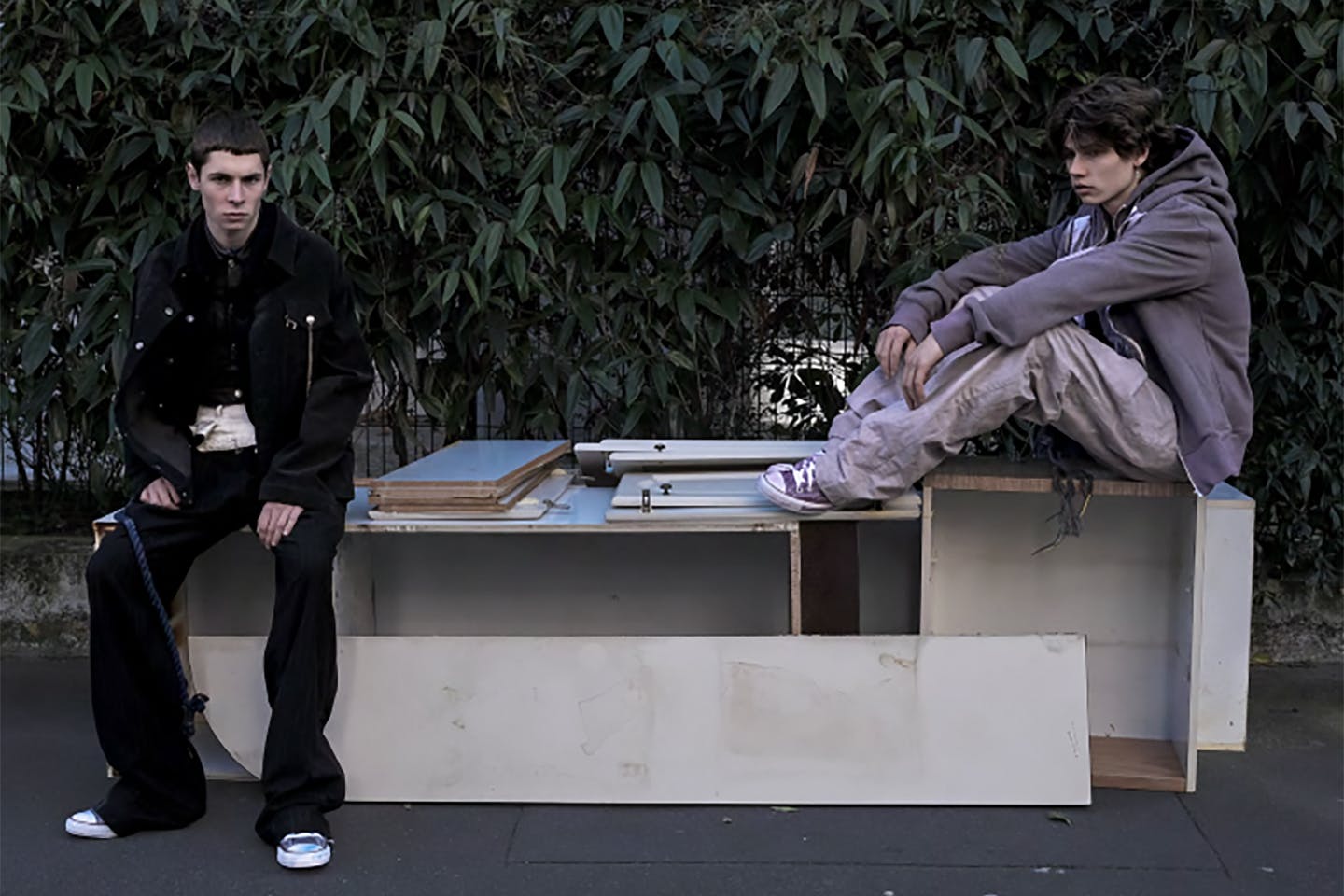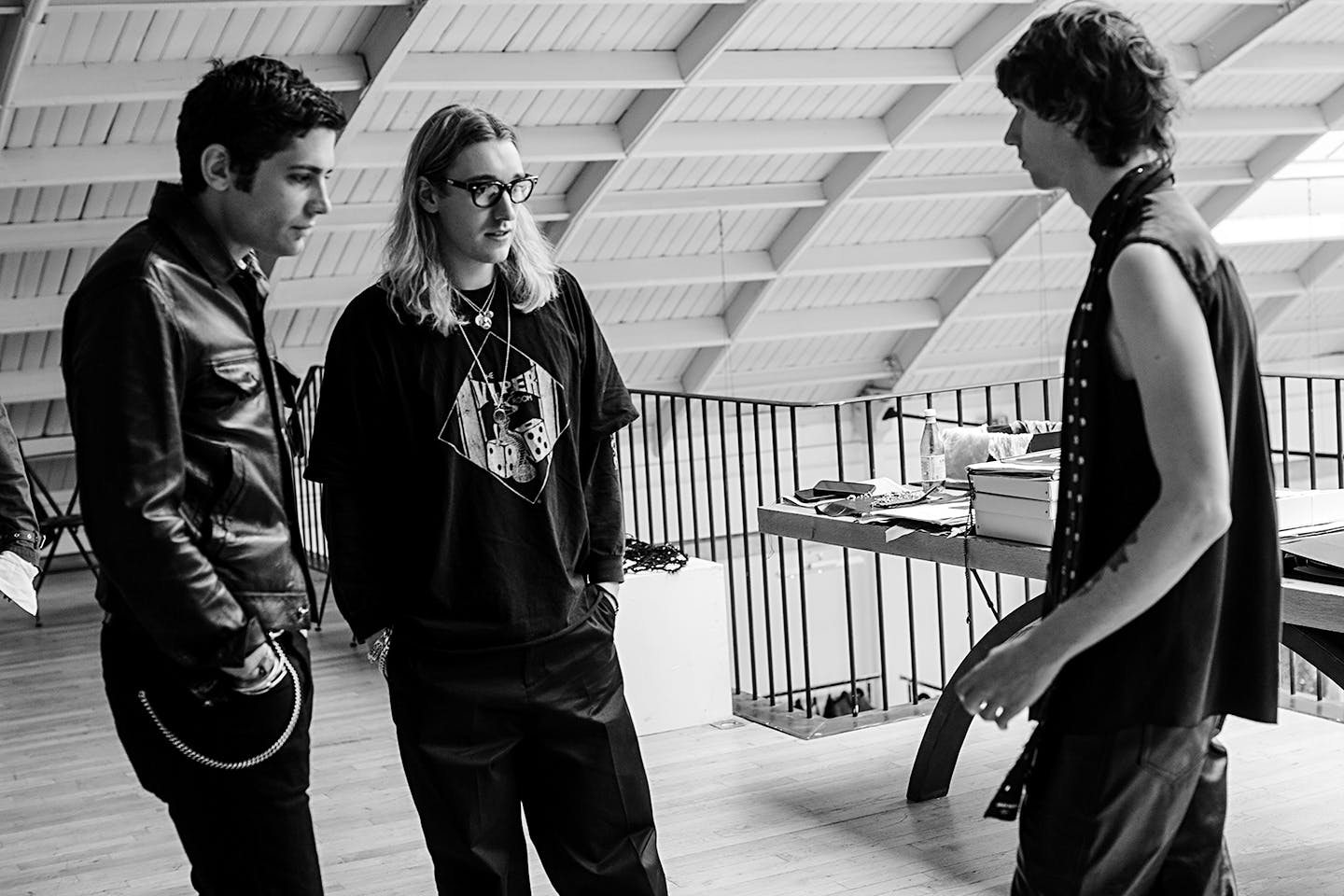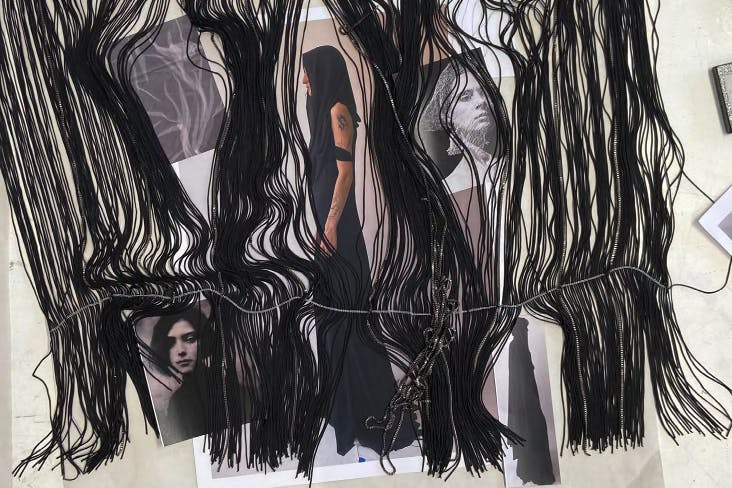In the semester-long initiative focused on fashion as cultural commentary, students were challenged to reinterpret the house’s iconic codes—poetry, androgyny, and dark romanticism—in their own creative practice. The project began with a design brief from
Gallici, who invited students to explore the creative DNA of Demuelemeester, who is one of a small group of groundbreaking fashion designers known as the Antwerp Six.
“The most unique and irreplaceable aspect of the Ann Demeulemeester brand is its ability to capture the intangible—a dream-like quality that allows fashion to transcend mere garments,” says Gallici.
 A black-and-white photo by MFA student Wenyi Cai of a model wearing a white gown, inspired by Ann Demeulemeester, designed by Cai’s classmate Yuzi Zhang.
A black-and-white photo by MFA student Wenyi Cai of a model wearing a white gown, inspired by Ann Demeulemeester, designed by Cai’s classmate Yuzi Zhang.Students studied the house’s archives—garments, sketches, and mood boards tracing Demeulemeester’s poetic design language—and examined how the brand merges strength and fragility, punk language and poetry, and fashion and music, art, and subculture. Their
process included concept development, sketching, 3D sampling, fabric manipulation, and the creation of toiles.
Gallici encouraged students to draw from a range of media, including cinema, music, literature, and photography. Siling Chen imagined a road trip through Tibet with Robert Mapplethorpe and Anne-France Dautheville, fusing biker wear with Tibetan silhouettes.
Chandler Burke reimagined Demeulemeester’s layering through the lens of 1980s youth rebellion, inspired by The Outsiders and Mary Ellen Mark’s photography. Logan Goff Monroe was inspired by post-punk bands like The Birthday Party and goth aesthetics.
 A photo by MFA student Yuzi Zhang of two seated models wearing menswear looks inspired by Ann Demeulemeester and designed by Zhang’s classmate Chandler Burke.
A photo by MFA student Yuzi Zhang of two seated models wearing menswear looks inspired by Ann Demeulemeester and designed by Zhang’s classmate Chandler Burke.“In my collection,” says student Yumu Li, “I was captivated by Ann’s masterful deconstruction techniques, which I categorized into four approaches: Expanding (enlarging garments and retying them with cords), Extending (elongating specific sections,
often the front placket and collar), Enveloping (utilizing rectangular patterns and one-piece cutting), and Excessing (repetition and double layers).”
The project culminated in a collaborative photoshoot across Paris, with students photographing each other’s designs. Cinematic and deeply personal, the resulting work reflects Parsons Paris’ commitment to bold, boundary-pushing design education.
 Stefano Gallici, Creative Director of the Anne Demeulemeester fashion company, examines a look by MFA student Logan Monroe Goff at the fashion firm’s atelier.
Stefano Gallici, Creative Director of the Anne Demeulemeester fashion company, examines a look by MFA student Logan Monroe Goff at the fashion firm’s atelier.“Ann’s work has always been about challenging norms, embracing complexity, and celebrating the beauty in imperfection,” says Gallici. “It’s a brand for dreamers—for those who dare to dream beyond what is immediately visible.” Rooted in Paris’ rich artistic
landscape and Parsons’ legacy of pushing creative boundaries, the project offered students a rare opportunity to engage with a house that champions individuality, emotional depth, and cultural dialogue, making it an ideal and inspiring partnership
for the next generation of fashion visionaries.
 MFA student You Wu’s moodboard includes photographs and black fringe used in Wu’s fashion designs and inspired by Anne Demeulemeester’s flowing clothing.
MFA student You Wu’s moodboard includes photographs and black fringe used in Wu’s fashion designs and inspired by Anne Demeulemeester’s flowing clothing.“This project helped me think more deeply about combining the emotional and functional layers of clothing,” says student You Wu. “I started by exploring archetypal garments like trench coats and raincoats—echoing Ann’s use of archetypes. From there, I
developed my own textiles to add emotionality and reflect the organic movement of nature, translating protection into something poetic and personal.”